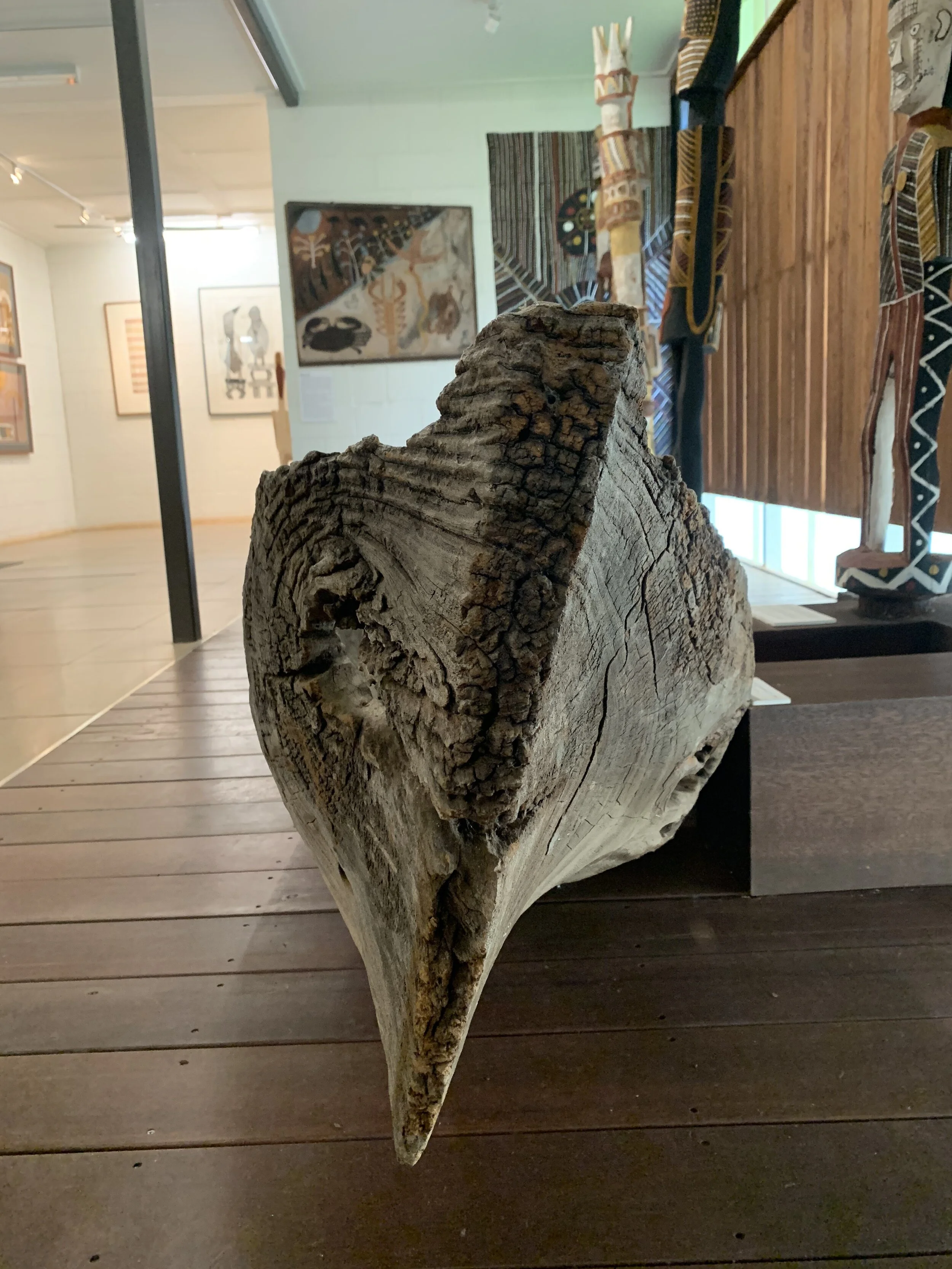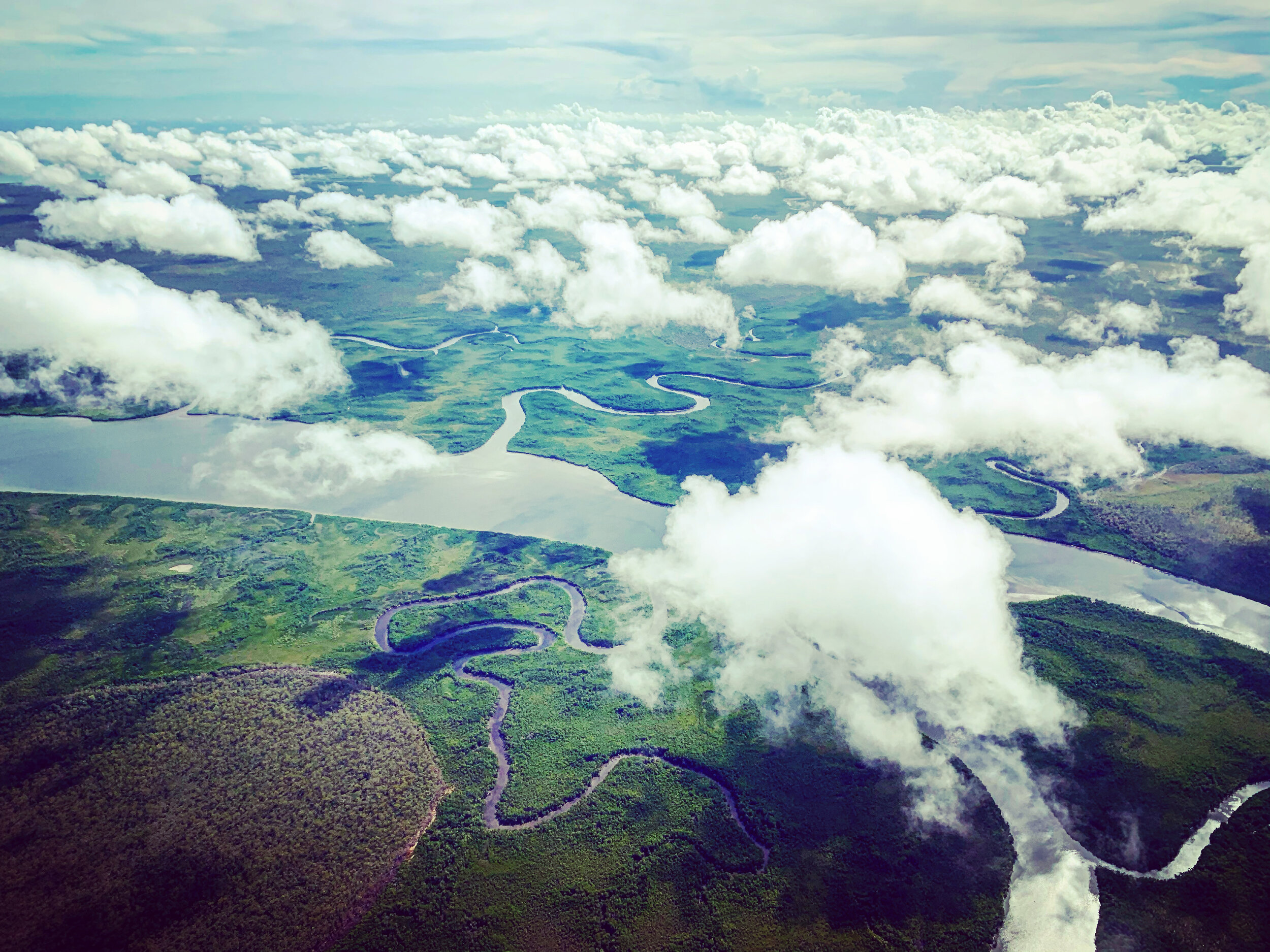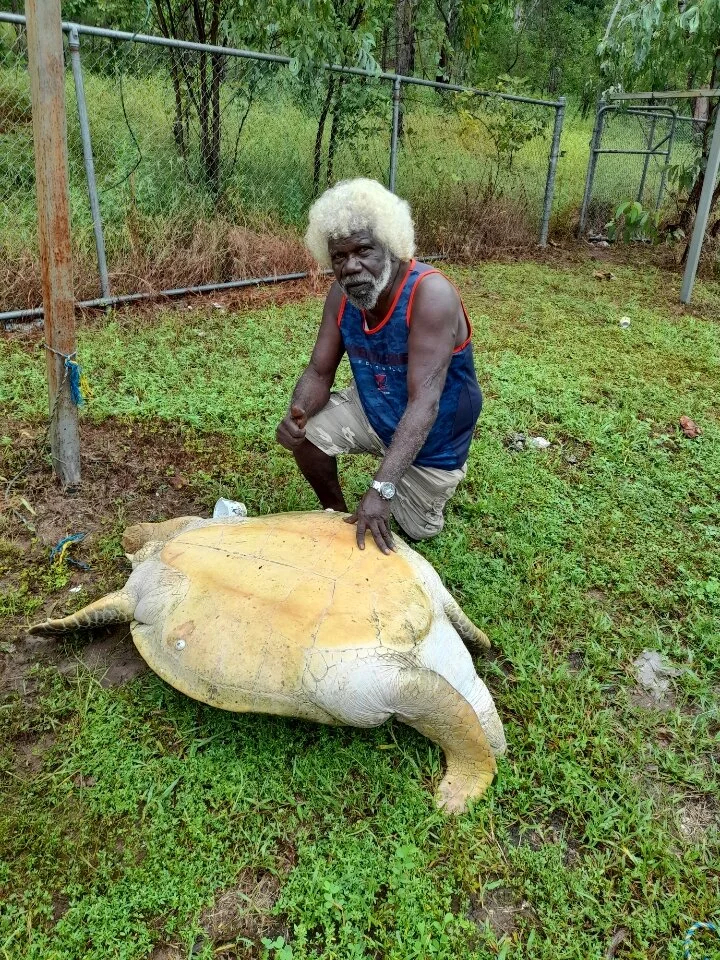The Oldest Boat in Australia?
The bow of the Australian Aboriginal canoe, shaped by a Makassan axe.
Without boast or arrogance, Australia is truly one of the world’s most magnificent countries And John Wilson, Tiwi Island Traditional Owner, should be a household name. What John doesn’t know about Tiwi Culture, the land and sea is not worth knowing. This quiet gentleman is a walking Encyclopaedia of local knowledge and John is gifted with smiling eyes that draw you in and leave you wanting to know more - such as the Story of Arguably, australia’s oldest woodenboat.
My visits to the Tiwi have had nothing to do with sailing and everything to do with football, but I’ve said it before and I’ll say it again, where there is wood there is a story, and this is one such instance.
Last week I flew out of Melville Island in a single engine, three seater plane, dodging rain storms and following the coast; catching sun glints off the back of snaking rivers; spotting from the air the cluster of mangroves where just the day before we had picked periwinkles from the trunks and tasted turtle. Flying home I was reminded of the beautiful sentiment Dianne had shared with me around a fire as a parting gift - ‘For some people, The Tiwi,’ she said, ‘gets under your skin. It becomes part of you and you’ll be back.’
The Tiwi Islands from the air - it was here in the mangroves of East Melville where the canoe was found.
The Tiwi Islands, Melville and Bathurst, lie in the Arafura Sea 90km north of Darwin. Since 1978 the Tiwi have been self-determined, managed by a Land Council comprising of Traditional Owners from eight families. To be Tiwi is to be proud of your heritage, your dreaming, your country and your people. To be Tiwi is to play football, Aussie Rules, this is a mythical land of sporting champions.
And that’s what has found me in the Tiwi on numerous occasions over the last three years, making a film about the first Tiwi women to play professional Aussie Rules. You see, in the Tiwi there is religion and there is football and football is their religion. Tiwi footballers are renowned for exquisite one-touch skills where players tap the ball along the ground into advantage. It’s barefoot and fast. Tiwi-style is exciting. There’s a feeling amongst those in the know at the AFLW that it will be Tiwi girls who promise to bring a much needed sting of X-factor to the game down south. If you admire legends, you may be interested to know that a tiny community of 400 people, Garden Point on Melville Island, has produced three Norm Smith Medallists, Maurice Rioli, Michael Long and Cyril ‘Junior Boy’ Rioli, an award presented to the best player in an AFL Grand Final; legends all. Even if you’re not into footy, this is an amazing statistic. The Riolis and Longs are men who have gone back to the Tiwi to become proud leaders. What will the girls do once given the same opportunities as their brothers? You get the gist, no doubt. If you’re interested, here’s a link to the Sizzle Reel for the film.
As the islands are governed by the Tiwi Island Land Council, to visit you need permits and official permission and whilst on the island, visitors are required to have with them at all times, a Traditional Owner and member of the Land Council and that’s how I met John Wilson. John plays an active role in the management of the environment. He is the local knowledge on all things to do with Tiwi history and the landscape – both land and water. In the Tiwi, there are 12 seasons, named for what you see, such as Knock em Over – a time at the end of summer where strong winds knock down tall, dry grass.
John with big mob, good tucker, turtle.
John Wilson is a master story teller so having someone like John with us was truly wonderful as he was the person to unlock the stories behind the stories. We were to spend ten days together, a small film crew of three people and John.
Born in Milikapati on Melville Island, John now lives in Wurrumianga on Bathurst where as a child he attended the convent school, run by nuns. I was surprised to discover John recounted his school days with a deep sense of love and admiration. He is particularly proud of his penmanship. History, Geography and Art were his three favourite subjects. At school he devoured anything to do with the history of the sea and he remembers his world expanding as he connected the stories that had been passed to him by his grandparents about the Makassan Trepangers of Indonesia and what he was to learn in school, within the pages of an atlas.
On the day we went hunting in the mangroves, John didn’t come out with us. Gathering periwinkles and mud mussels is woman’s work. But once, having survived the crocodiles and we returned from the beach, John wanted to take me to the Museum. Because there, recently discovered, lay a boat, cut out of a single log, a true dug-out canoe believed to be the oldest craft of its kind in the Northern Territory.
Together we spent a wonderful hour talking about the influence and impact of Makassan boat building for the people of the Tiwi and how the introduction of the axe changed everything.
There is some dispute amongst scholars as to when the Makassan’s of Sulawesi first interacted with the indigenous people of the Northern Australia. There is evidence of trading back as far as the 1500’s. However it was in the late 1600’s and early 1700’s when the Trepang Industry – the hunt for Sea Cucumber - a marine invertebrate prized for its culinary value generally and for its medicinal properties in Chinese markets, truly ramped up.
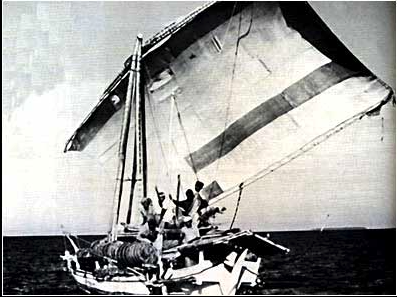
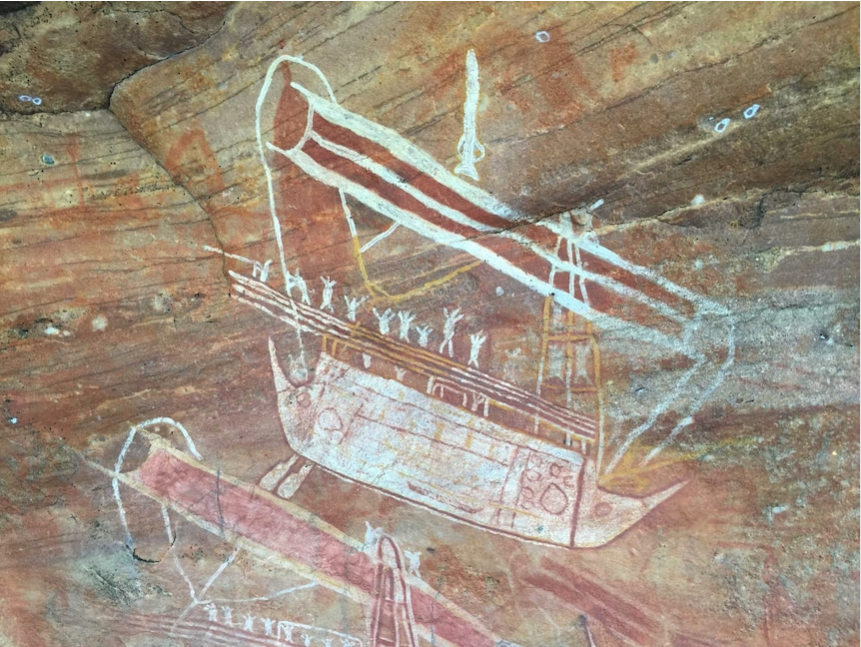
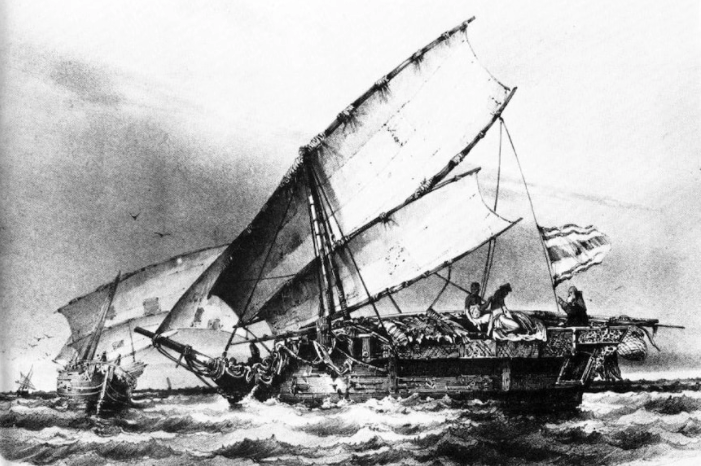
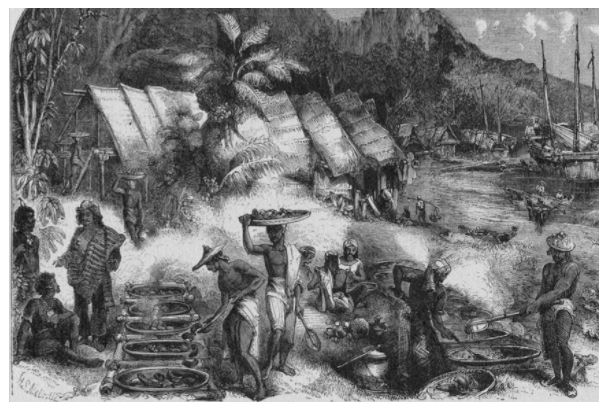
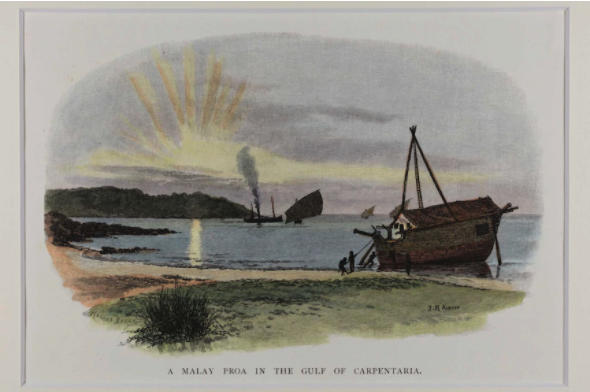

The Makassans set up temporary processing plants to boil, dry and smoke the Trepang before delivering a haul back to the markets in Indonesia. Matthew Flinders, in his circumnavigation of Australia in 1803, met a Makassan trepang fleet near present-day Nhulunbuy. He communicated at length with a Makassan captain, Pobasso, through his cook, who was also a Malay, and learned of the extent of the trade from this encounter. There were "1,000 Macassans" compared to the "7,000 British nestled into Sydney Cove and Newcastle".
Makassan PERAHU or PRAUS could carry a crew of thirty and at the height of the Trepang industry, the Makassan spanned thousands of kilometres along Australia's northern coasts, arriving with the north-west monsoon each December.
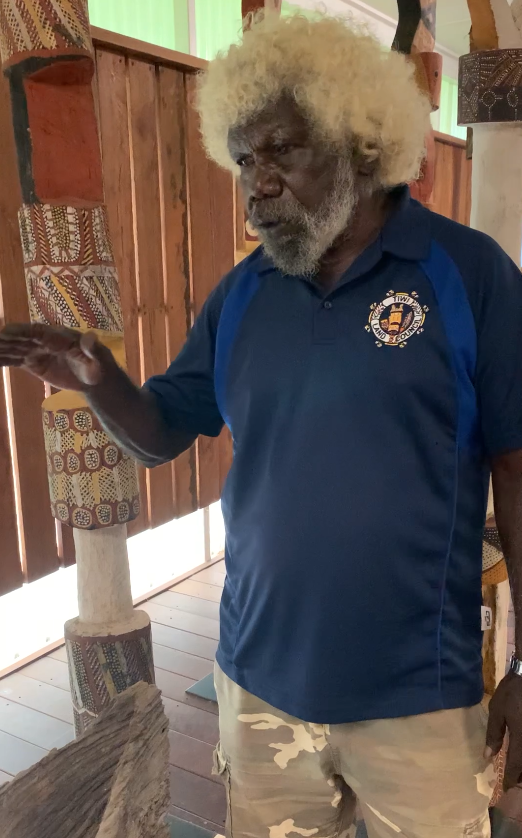

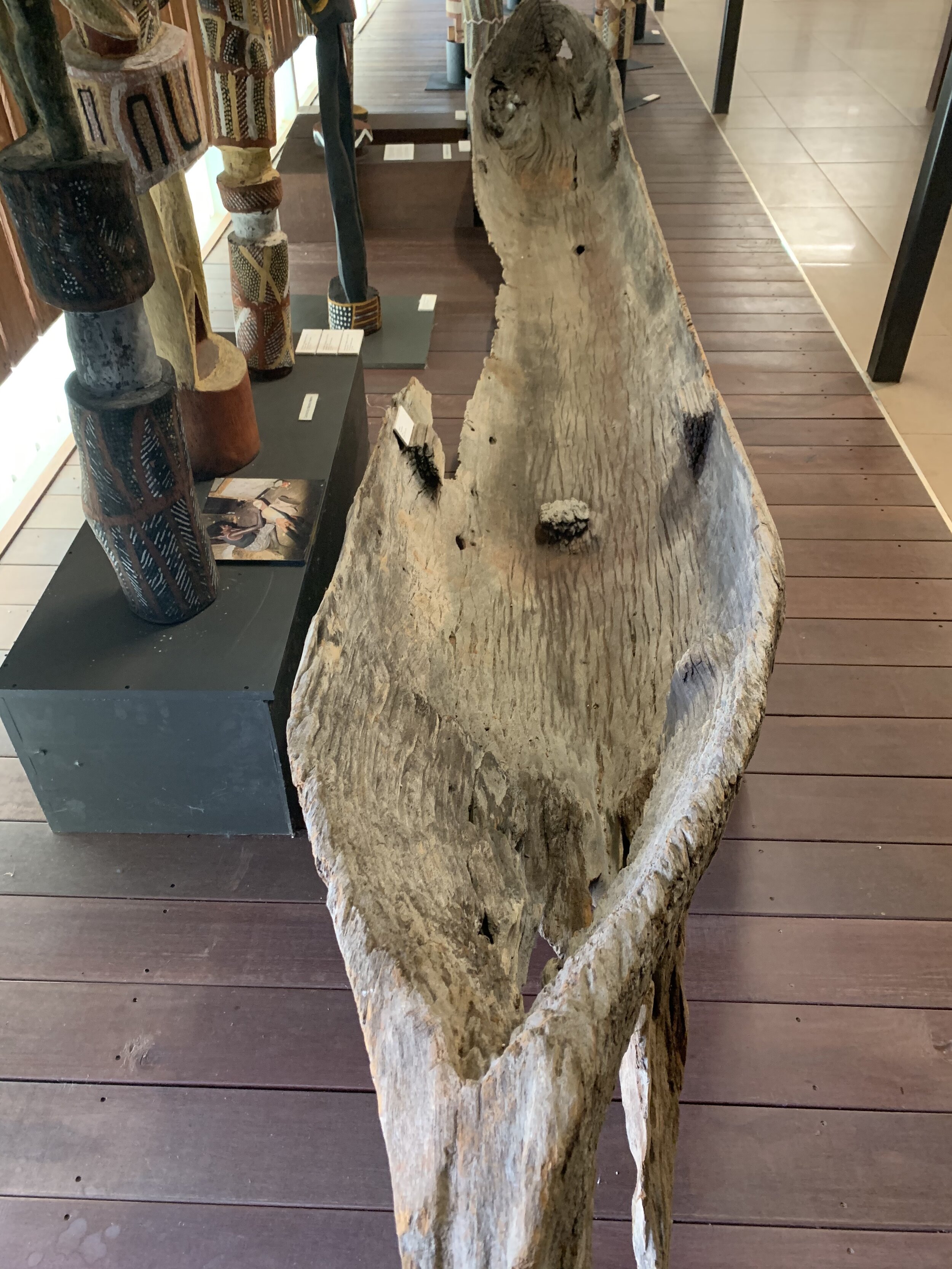
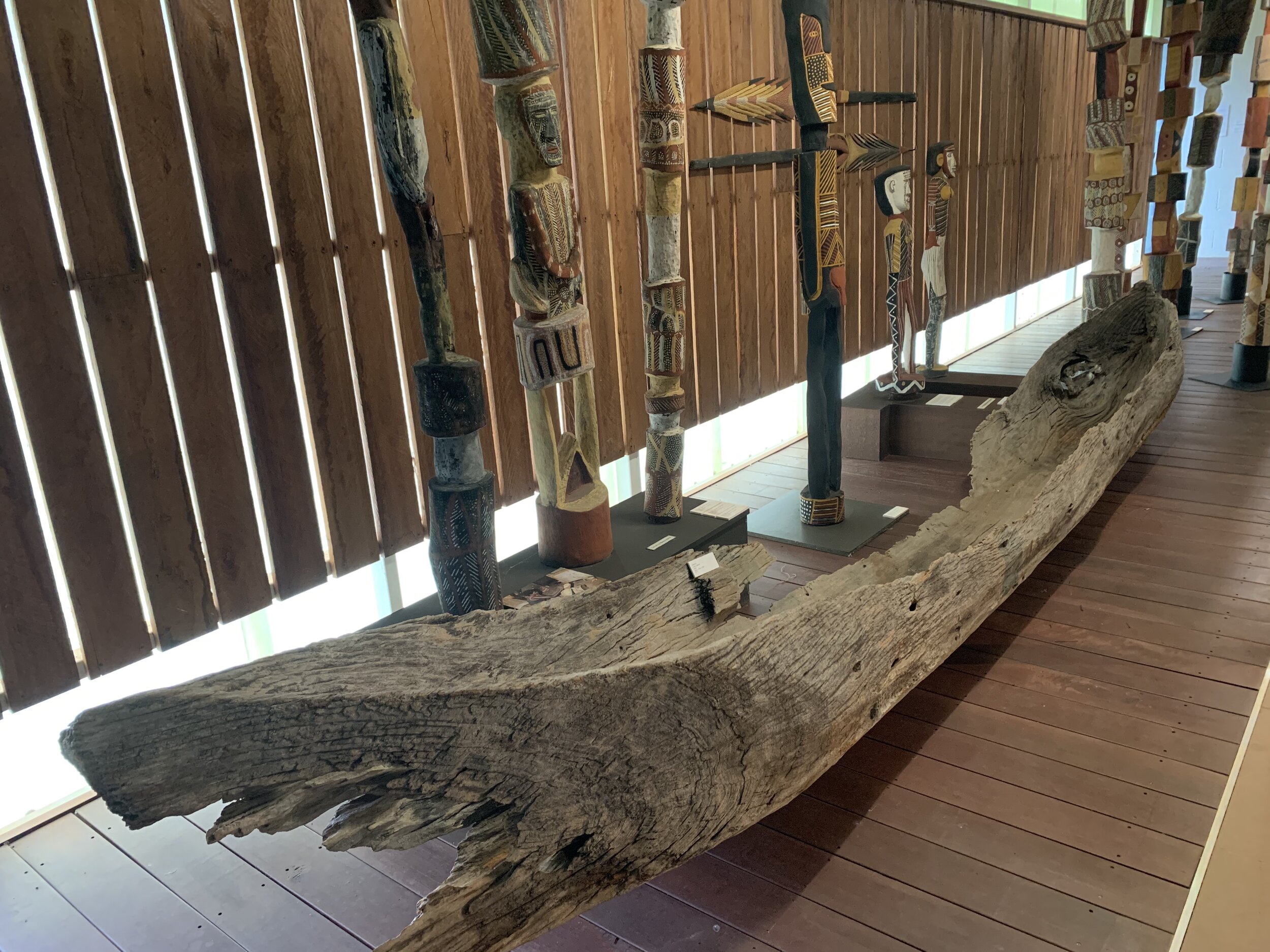
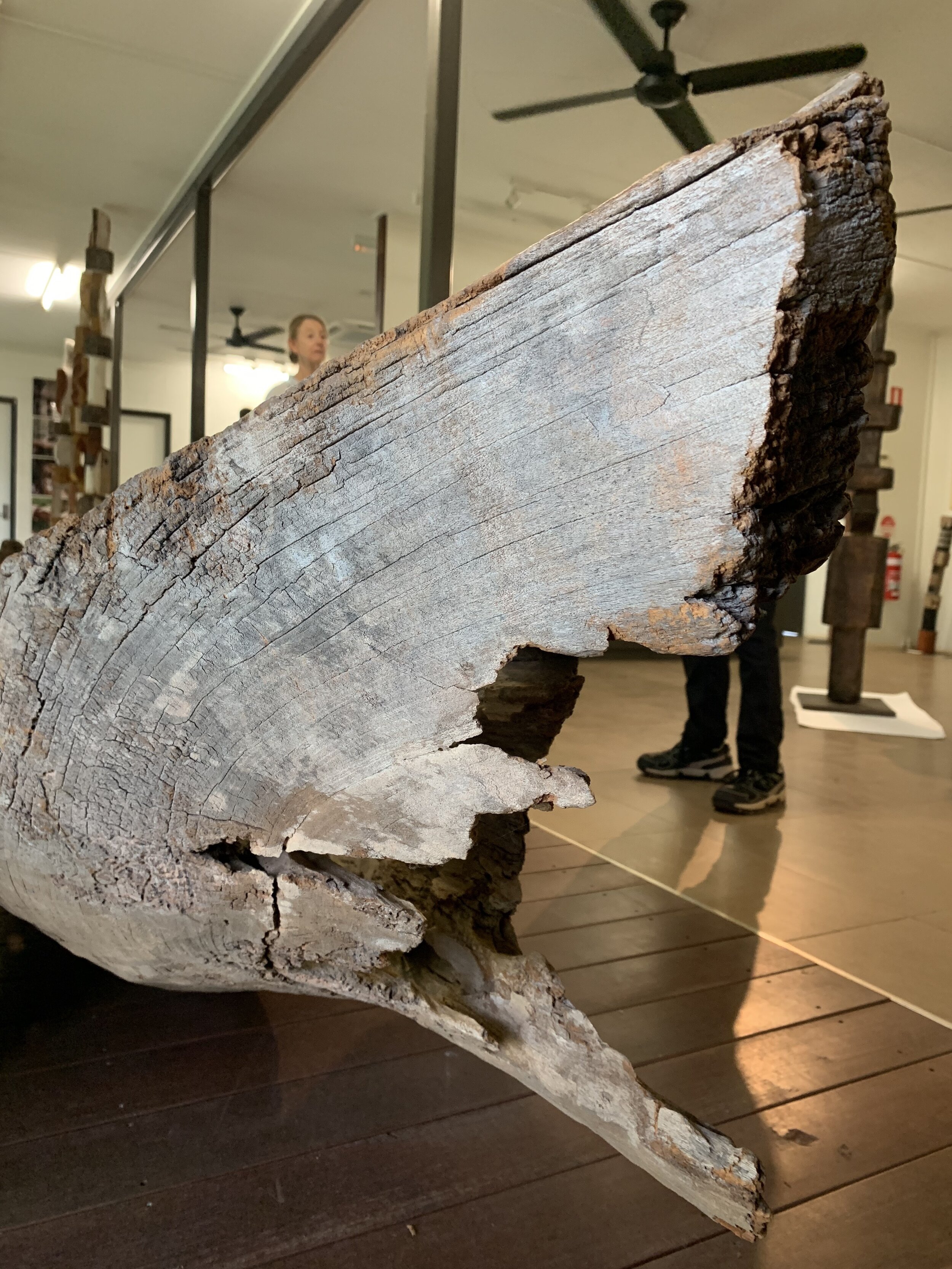
In the Tiwi, Sea Cucumber was traded for cloth, tobacco, metal axes and knives, rice, and gin. Women were also occasional items of exchange. But it was Makassan technology in the form of an axe that had the greatest impact finding Tiwi men, already known for their hunting prowess to become even greater seafaring hunters of the north. For along with product, knowledge too was traded. Tiwi people would show the Makassans where to harvest Sea Cucumber and in return, the Makassans were to teach the Tiwi how to carve wood with an axe to make a boat from a single log of wood.
These seaworthy boats, unlike traditional bark canoes, allowed people to fish the ocean, for larger dugong and turtle and it was all due to the Maskassans showing the Tiwi why and how to leave two foot shaped steps in the bow of the boat. These steps allowed a hunter to stand solidly in the bow using height and leverage to place great force into the action of throwing a spear.
Added to this knowledge was also the skill to shape a bow with a slight curve for better manoeuvrability while being paddled enabling the seas to be hunted with greater consistency and success.
John told me how the canoe in the museum had recently been sighted by a crocodile hunter, from a helicopter. It was deep in a swamp, partially hidden by mangroves. But the shape was unmistakeable and returning with a Rescue Crew, the canoe was winched from its hiding place and flown through the air back to Milikapati where it was gently lowered onto the oval before being carried by 20 men over to the Museum.
In Tiwi culture you are born into one of four skin groups and based on the country of your family, you also have a totem. Your totem is indicative of your dreaming and your dance. A Tiwi person does not eat the animal of their totem. I wonder if people feel a little ripped off to have Turtle as their totem! Turtle is good tucker and March is big mob turtle time. For the record, turtle tastes a little like tuna with the texture of filet steak. I look forward to sharing turtle for breakfast once more with John Wilson of Milikapati.

